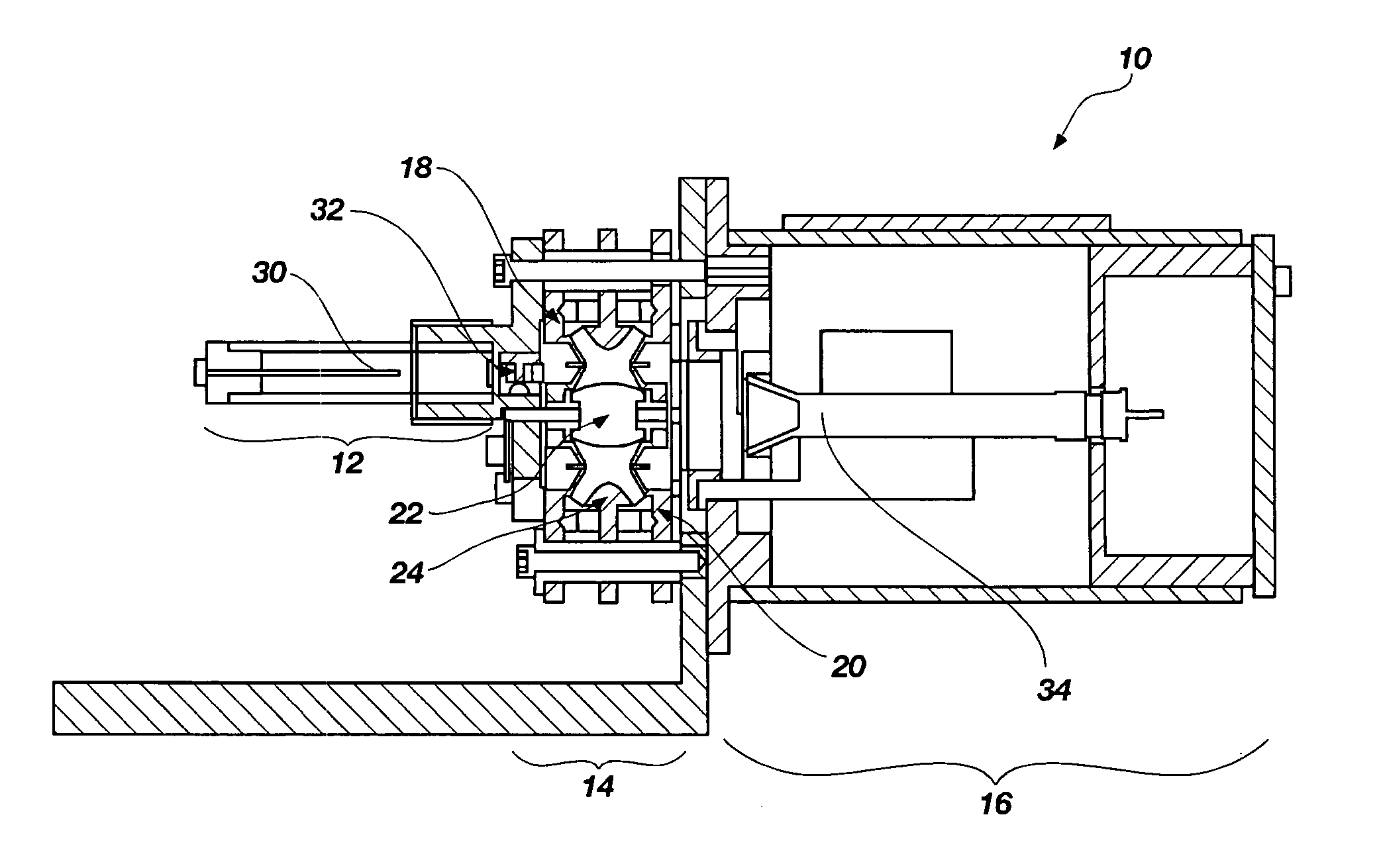Miniature toroidal radio frequency ion trap mass analyzer
a radio frequency ion trap and mass analyzer technology, applied in the field of storage, separation and analysis of ions, can solve the problems of large reduction of operating voltage, inability to analyze mass, so as to achieve easy interface and reduce dimensions
- Summary
- Abstract
- Description
- Claims
- Application Information
AI Technical Summary
Benefits of technology
Problems solved by technology
Method used
Image
Examples
first embodiment
[0059]In the present invention, it is noted that a means must be provided wherein ions are admitted into and exit from the trapping region 14 as defined by the end caps 18, 20 and the inner ring 22 and the outer ring 24. Ion admission and ejection is accomplished by means of slits and recessed bridges in the filament endcap 18 and the detector endcap 20.
[0060]As the analyzer dimensions of ion trap mass analyzers become increasingly smaller, machining and other field imperfections can increase in their significance causing deleterious effects on the trapping and mass analysis capabilities of the ion trap. Discontinuities in the trapping field manifest themselves as perturbations to the desired essentially quadrupolar trapping field. A homogenous trapping field requires that the electrode surfaces be the same throughout the entire trapping volume. However, in order to provide for electron or ion admission into the trapping volume during ionization and mass ejection to the detector dur...
second embodiment
[0064]In a second embodiment, it is another aspect of the present invention to optimize the size of the miniature toroidal RF ion trap analyzer. Traditional, full-size commercial 3D ion trap mass analyzers have a trapping chamber radius on the order of 1 cm. As such, the maximum RF voltage applied to the ring electrode for a maximum mass range of 650 da, and an operating frequency (Ω) of 1.1 MHz is approximately 15 kVp-p. In contrast, a toroidal ion trap geometry with the same radial dimension and an approximate 3:1 ratio between the radius of the torus (R) to the radius of the cross-sectional trapping field (r0) would have roughly 400 times more ion storage volume than the conventional 3D analyzer. This higher ion capacity can be traded against analyzer size. In other words, a toroidal RF ion trap with approximately the same storage volume as an ion trap of conventional design can be much smaller. For the reasons described above, the resulting smaller ion trap operating parameter i...
third embodiment
[0067]In the present invention, it is another aspect of the invention that it is desirable to protect the detector from ions both inside and outside the trapping volume during ionization. There are several sources of these ions. For example, during the ionization event, a large ion current reaches a detector in the detector assembly 16 either indirectly (by scattering), through the ion trap analyzer, or due to the formation of ions whose stability parameters are outside the stability boundary and as such they are immediately ejected from the trap and into the detector. This excess, non-mass analyzed current has the deleterious effect of shortening the life of the detector. It is desirable to prevent detector signal during ionization to thereby increase the life of the detector.
[0068]One approach to address this problem is to turn the detector off during ionization and then back on for the subsequent mass analysis scan. Switching the detector voltages on and off, however, is slow at ...
PUM
 Login to View More
Login to View More Abstract
Description
Claims
Application Information
 Login to View More
Login to View More - R&D
- Intellectual Property
- Life Sciences
- Materials
- Tech Scout
- Unparalleled Data Quality
- Higher Quality Content
- 60% Fewer Hallucinations
Browse by: Latest US Patents, China's latest patents, Technical Efficacy Thesaurus, Application Domain, Technology Topic, Popular Technical Reports.
© 2025 PatSnap. All rights reserved.Legal|Privacy policy|Modern Slavery Act Transparency Statement|Sitemap|About US| Contact US: help@patsnap.com



